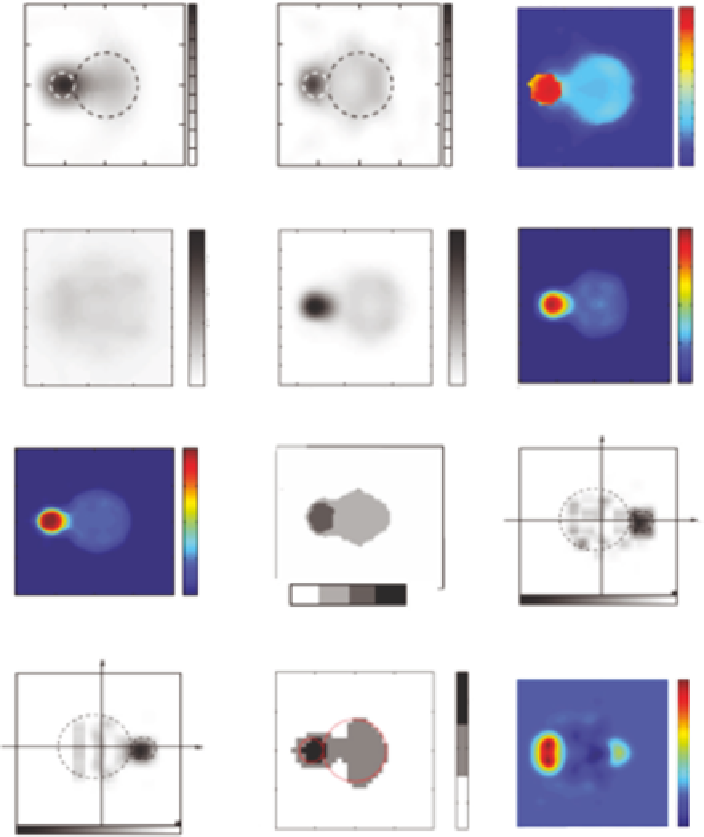Image Processing Reference
In-Depth Information
(a)
(b)
(c)
0.1
0.9
0.1
0.9
0
2
4
8
10
12
14
16
18
2
0.8
0.8
1.8
1.6
0.7
0.7
0.05
0.05
1.4
0.6
0.6
1.2
0.5
0.5
0
0
1
0.4
0.4
0.8
0.3
0.3
0.6
-0.05
-0.05
0.2
0.2
0.4
0.1
0.1
0.2
-0.1
-0.1
0
-0.1
-0.1
0
0
0
5
10
15
-0.05
0
0.05
0.1
-0.05
0
0.05
0.1
x
(m)
x
(m)
(d)
(f )
(e)
100
3
0.06
0.06
3
3
50
2.5
0.04
0.02
0
-0.02
-0.04
-0.06
0.04
0.02
0
-0.02
-0.04
-0.06
2.5
2.5
0
2
2
2
-50
1.5
1.5
1.5
-100
-100
1
-50
0 0
100
-0.05
0
0.05
-0.05
0
0.05
x
(mm)
y
(g)
(h)
(i)
100
3
50
2.5
0
2
x
-50
1.5
-100
-100
1
4
1
-50
0 0
100
x
(mm)
Re{τ(
x
,
y
)}
2.6
0.0
(j)
y
(k)
(l)
250
3
2.0
0.05
200
150
100
2.5
1.0
x
0
2
-0.05
50
0.0
1.5
-0.1
-0.1
50
100
150
200
250
-0.05
0
0.05
Re{τ(
x
,
y
)}
2.6
0.0
x
(m)
Figure 9.23
Comparison of reconstruction algorithms on FoamDielExt (a) the two-step inexact Newton method
(2 GHz), (b) the two-step inexact Newton method (5 GHz), (c) CSI Method, (d) MGM method, (e) MGM method with
adaptive multiscale, (f) DTA/CSI methods, (g) DTA/CSI methods, (h) Bayesian Inversion method, (i) IMSA (plane
wave) method, (j) IMSA (line source) method, (k) general iterative method, and (l) cepstral method.
and shape of object, but there still seems to be image artifacts present associ-
ated with limited data availability.
Figure 9.24 shows the comparison of the reconstructions between various
published methods for FoamTwinDiel as before. Because of its complex geo-
metrical configuration, this object is one of the most challenging objects pro-
vided by Institut Fresnel to image. Other than the DTI/CSI Method (Abubakar
et al., 2005), most of the reconstructions seem to show a low quality estimate
of the object dimensions and permitivity. Being noniterative in nature, the
cepstral method depends on data coverage. For this multilayered object, in
order to get a meaningful reconstruction from the cepstral method it appears

Search WWH ::

Custom Search